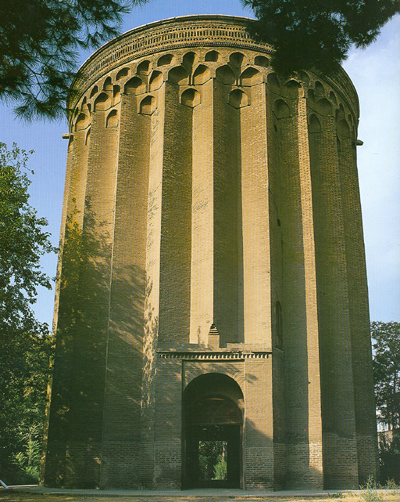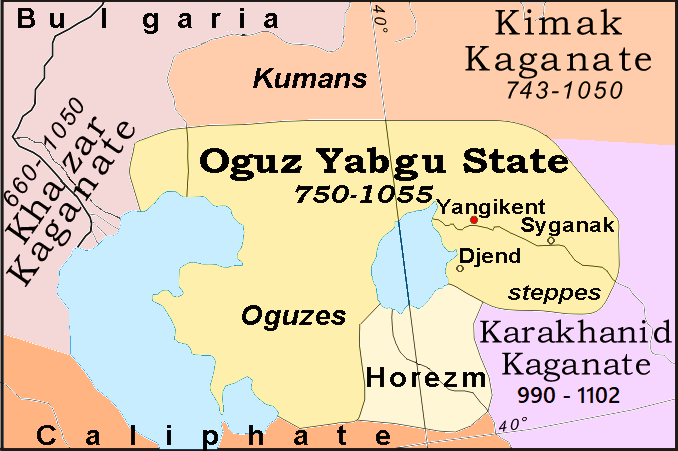|
Seljuk , also called ''Seljuk''
{{disambiguation ...
Seljuk or Saljuq (سلجوق) may refer to: * Seljuk Empire (1051–1153), a medieval empire in the Middle East and central Asia * Seljuk dynasty (c. 950–1307), the ruling dynasty of the Seljuk Empire and subsequent polities * Seljuk (warlord) (died c. 1038), founder of the Seljuk dynasty * Seljuk Sultanate of Rum (1060–1307), a medieval empire founded by later members of the dynasty See also * Seljuk Tower, the 11th tallest building in Turkey * ''Saljuq-nama'', a 12th-century history of the Great Seljuk Empire * Seljuki Khatun (died 1189), the wife of Caliph al-Nasir * '' Uyanış: Büyük Selçuklu'', a Turkish television series * Selçuk (other) * Salchuq language Salchuq (also Seljuk) is an extinct Turkic variety spoken in Iran. It was probably a dialect of Azerbaijani. The name comes from the Seljuk Turks, who brought Turkic dialects to Persia and Anatolia. It mostly likely broke off from the Oghuz lang ... [...More Info...] [...Related Items...] OR: [Wikipedia] [Google] [Baidu] |
Seljuk Empire
The Great Seljuk Empire, or the Seljuk Empire was a high medieval, culturally Turko-Persian, Sunni Muslim empire, founded and ruled by the Qïnïq branch of Oghuz Turks. It spanned a total area of from Anatolia and the Levant in the west to the Hindu Kush in the east, and from Central Asia in the north to the Persian Gulf in the south. The Seljuk Empire was founded in 1037 by Tughril (990–1063) and his brother Chaghri (989–1060), both of whom co-ruled over its territories; there are indications that the Seljuk leadership otherwise functioned as a triumvirate and thus included Musa Yabghu, the uncle of the aforementioned two. From their homelands near the Aral Sea, the Seljuks advanced first into Khorasan and into the Iranian mainland, where they would become largely based as a Persianate society. They then moved west to conquer Baghdad, filling up the power vacuum that had been caused by struggles between the Arab Abbasid Caliphate and the Iranian Buyid Empire. T ... [...More Info...] [...Related Items...] OR: [Wikipedia] [Google] [Baidu] |
Seljuk Sultanate Of Rum
fa, سلجوقیان روم () , status = , government_type = Hereditary monarchyTriarchy (1249–1254) Diarchy (1257–1262) , year_start = 1077 , year_end = 1308 , p1 = Byzantine Empire under the Doukas dynastyByzantine Empire , p2 = Seljuk Empire , p3 = Danishmends , p4 = Mengujekids , p5 = Saltukids , p6 = Artuqids , s1 = Anatolian beyliks , s2 = Ilkhanate, , event_pre = Battle of Manzikert , date_pre = 1071 , event_start = Division from the Seljuk Empire , event1 = Battle of Köse Dağ , date_event1 = 1243 , event_end = Karamanid conquest , image_flag = Double-headed eagle of the Sultanate of Rum.svg , flag_size = 100px , flag_type = ... [...More Info...] [...Related Items...] OR: [Wikipedia] [Google] [Baidu] |
Seljuk Dynasty
The Seljuk dynasty, or Seljukids ( ; fa, سلجوقیان ''Saljuqian'', alternatively spelled as Seljuqs or Saljuqs), also known as Seljuk Turks, Seljuk Turkomans "The defeat in August 1071 of the Byzantine emperor Romanos Diogenes by the Turkomans at the battle of Malazgirt (Manzikert) is taken as a turning point in the history of Anatolia and the Byzantine Empire. or the Saljuqids, was an Oghuz Turkic, Sunni Muslim dynasty that gradually became Persianate and contributed to the Turco-Persian tradition in the medieval Middle East and Central Asia. The Seljuks established the Seljuk Empire (1037-1194), the Sultanate of Kermân (1041-1186) and the Sultanate of Rum (1074-1308), which at their heights stretched from Iran to Anatolia, and were the prime targets of the First Crusade. Early history The Seljuks originated from the Kinik branch of the Oghuz Turks, who in the 8th century lived on the periphery of the Muslim world, north of the Caspian Sea and Aral Sea in their ... [...More Info...] [...Related Items...] OR: [Wikipedia] [Google] [Baidu] |
Seljuk (warlord)
Seljuk Beg ( tr, Selçuk bey) fa, سلجوق ﺑﯿﮓ ''Saljūq''; also romanized ''Seldjuk'', ''Seldjuq'', ''Seljuq''; tk, Seljuk beg Dukag; "Çagry beg bilen Togrul beg Mykaýylyň ogullary, nesilbaşy Seljuk beg Dukagyň agtyklarydyr." az, Səlcuq bəy "Səlcuq bəy Oğuz dövlətində hərbi dəstə başçısı - subaşı vəzifəsi daşıyırdı." died 1007 or 1009) was an Oghuz Turkic warlord, eponymous founder of the Seljuk dynasty. Etymology The personal name Seljuk appears as "''Selcük''" in Mahmud al-Kashgari's ''Dīwān Lughāt al-Turk'' and the ''Book of Dede Korkut''. There are different theories about the etymology of Seljuk: * ''selçük'', meaning "small flood" * ''salçuk'', meaning "small float" * ''salçığ'', meaning "disputant" According to Caferoğlu (1993), the name was derived from the root ''sil-'' in Old Uyghur, meaning "clean". Although, the root of ''sil-'' was transformed as i > e, and that the name was created by adding the diminutive of ' ... [...More Info...] [...Related Items...] OR: [Wikipedia] [Google] [Baidu] |
Seljuki Khatun
Seljuki Khatun ( ar, سلجوقي خاتون) or Saljuqi Khatun was a Seljuk Turkish princess of Rum, daughter of sultan Kilij Arslan II and wife of Abbasid caliph al-Nasir. Biography Seljuki Khatun was a daughter of sultan of Rum, Kilij Arslan II. She had eleven brothers,including future sultan Kaykhusraw I, and two older sisters. She spent her childhood at her father's court in Konya. She married Caliph al-Nasir () in 1186. Right after her betrothal to him, he sent an escort to bring her to Baghdad Baghdad (; ar, بَغْدَاد , ) is the capital of Iraq and the second-largest city in the Arab world after Cairo. It is located on the Tigris near the ruins of the ancient city of Babylon and the Sassanid Persian capital of Ctesiphon ..., consummated the marriage, and gave her priceless jewels and gifts. Seljuki died two years later in 1188. Caliph al-Nasir was so grief-stricken at her passing that he could not eat or drink for days. For many years her house was ... [...More Info...] [...Related Items...] OR: [Wikipedia] [Google] [Baidu] |
Al-Nasir
Abu'l-Abbas Ahmad ibn al-Hassan al-Mustadi' ( ar, أبو العباس أحمد بن الحسن المستضيء) better known by his laqab Al-Nasir li-Din Allah ( ar, الناصر لدين الله; 6 August 1158 – 5 October 1225) or simply as Al-Nasir was the Abbasid caliph in Baghdad from 1180 until his death. His laqab literally can mean ''The One who Gives Victory to the Religion of God''. He continued the efforts of his grandfather Al-Muqtafi in restoring the caliphate to its ancient dominant role and achieved a surprising amount of success as his army even conquered parts of Iran. According to the historian, Angelika Hartmann, Al-Nasir was the last ''effective Abbasid'' Caliph. In addition to his military success Al-Nasir built many monuments in Baghdad that are still standing such as Zumurrud Khatun Mosque and Mausoleum. Biography Al-Nasir was the son of Caliph al-Mustadi and a Turkish ''umm walad'' called ''Zumurrud'' (Emerald). His reign was unusual for the rise o ... [...More Info...] [...Related Items...] OR: [Wikipedia] [Google] [Baidu] |
Seljuk Tower
The 42-floor Seljuk Tower ( tr, Selçuklu Kulesi) is a skyscraper within the Konya Trade Center ( tr, Konya Ticaret Merkezi, also known as Kulesite) business and shopping center in Konya, Turkey. At the time of its completion in 2006, it was the 11th-tallest skyscraper in Turkey and the tallest in Konya and the Central Anatolia Region. The tower's official height is 163 m (535 ft) and has 42 floors above ground level. The top 2 floors are a revolving restaurant which rotates once in an hour, or 24 times in a day, offering panoramic views of the city. Number 42 is the licence plate number for Konya, which was the reason for constructing 42 floors above ground level. ''Kulesite AVM'' shopping mall A shopping mall (or simply mall) is a North American term for a large indoor shopping center, usually anchored by department stores. The term "mall" originally meant a pedestrian promenade with shops along it (that is, the term was used to refe ... is adjacent to the tower. Exter ... [...More Info...] [...Related Items...] OR: [Wikipedia] [Google] [Baidu] |
Saljuq-nama
The Saljūq-Nāma ( fa, سلجوقنامه, "Book of Seljuk mpire) is a history of the Great Seljuk Empire written by the Persian historian Zahir al-Din Nishapuri around 1175. Written in Persian, it has been acknowledged as the primary source for Saljuq material for Persian works dating from 13th century to 15th century, which include; ''Rahat al-sudur'', '' Jami al-tawarikh'', ''Tarikh-i Guzida'', ''Zubdat al-Tawarikh'' and '' Rawdat as-Safa''. Abu l'Qasim Qashani, a historian who wrote about the Ilkhanids, made alterations and additions to the original text, which was later misidentified as the original ''Saljuq-nama''. Content The ''Saljuq-nama'' is vague concerning the history of the sultans prior to Toghrul III, as noted by Claude Cahen, that Nishapuri had "...relatively poor sources at his disposal for the Seljuqs before his own lifetime..." Yet it is a short, restrained history using different sources than those used by Arabic writers of that time. Its textual history ... [...More Info...] [...Related Items...] OR: [Wikipedia] [Google] [Baidu] |
Selçuk (other)
Selçuk is a district and town of İzmir Province, Turkey. Selçuk may also refer to: * Selçuk (name), a Turkish masculine given name * Selçuk University Selçuk University ( tr, Selçuk Üniversitesi) is a state-owned higher educational institution which was founded 1975 in Konya, Turkey. It is one of the largest universities in Turkey with a student body of 63,000 of which 2,200 are foreign stu ... * '' Uyanış: Büyük Selçuklu'', a Turkish television series See also * Selcuk (other) * Seljuk (other) {{disambiguation ... [...More Info...] [...Related Items...] OR: [Wikipedia] [Google] [Baidu] |
Büyük Selçuklu
Büyük means "big" in Turkic languages and may refer to: People Given name * Büyük Jeddikar (born 1929), Iranian retired footballer * Büyük Vatankhah (born 1943), Iranian retired footballer Surname * Adem Büyük (born 1987), Turkish footballer * Musa Büyük (born 1980), Turkish footballer Places * Büyük Han, caravansarai in Cyprus * Büyük Menderes River The Büyük Menderes River (historically the Maeander or Meander, from Ancient Greek: Μαίανδρος, ''Maíandros''; tr, Büyük Menderes Irmağı), is a river in southwestern Turkey. It rises in west central Turkey near Dinar before fl ..., river in southwestern Turkey, the ancient river ''Meander'' * Büyük Saat, clock tower in Turkey Media * '' Büyük Düşler'', fifth studio album of Turkish alternative rock band Mor ve Ötesi * '' Büyük Teklif'', Turkish version of ''Deal or No Deal'' * Büyük Türkiye Partisi, short-lived Turkish political party in 1983 See also * Büyük ada (disambi ... [...More Info...] [...Related Items...] OR: [Wikipedia] [Google] [Baidu] |




